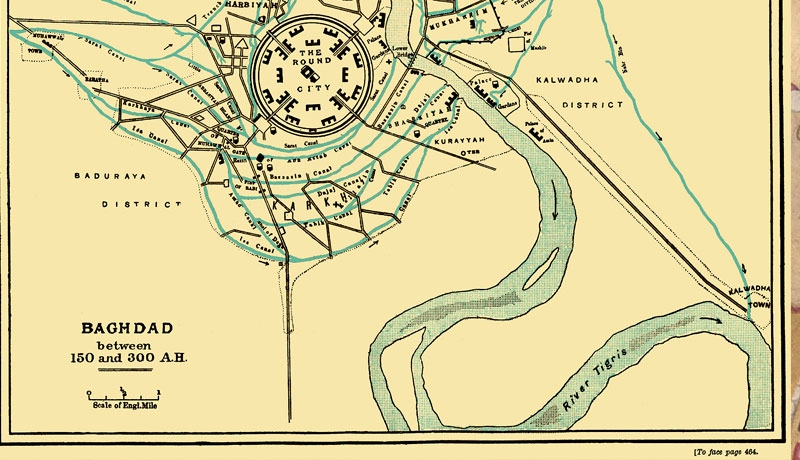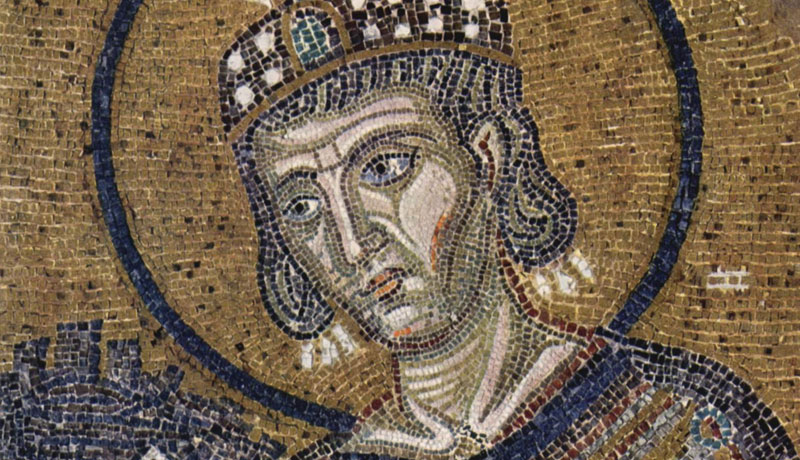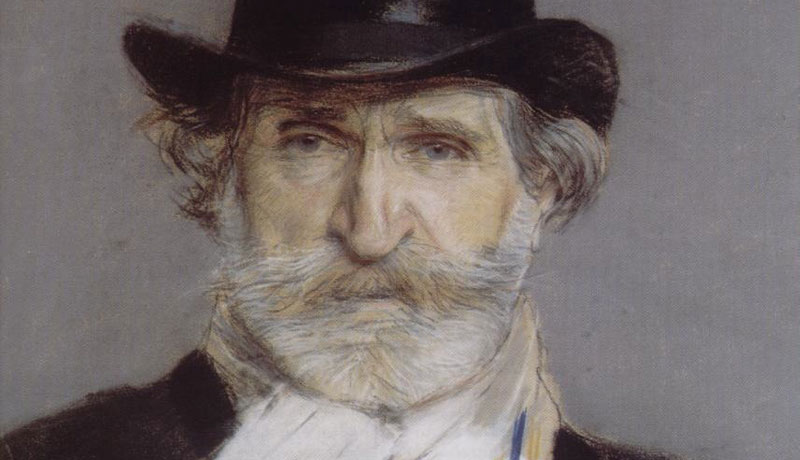Marines’ Memorial Theatre, San Francisco
From its founding in 762 as The City of Peace, Baghdad thrived as the political, cultural, religious, and commercial center of the Muslim empire. Abbasid caliphs ruled over diverse populations of Muslims, Christians, Jews, Zoroastrians, and polytheists, whose ethnic identities ranged from Arab to Persian and Turkish to Berber—all of whom contributed to the brilliance of the greatest city of its time in the Middle East, if not the world. At its House of Wisdom, scholars from across the empire translated into Arabic, synthesized and advanced the fragmented literary and scientific knowledge of ancient Greece, Persia, and India. Chinese paper technology enabled Baghdad bookstores to sell thousands of books a day. Without this chapter in history, the inheritance of antiquity would likely have followed tortured paths to the present. Baghdad’s intellectual and cultural influence was extraordinary in its time, and its legacy—and mythologizing—in the west and east continues to this day.
Friday, April 25, 7:30 pm to 9:30 pm
Introduction. Fred M Donner (University of Chicago), Moderator
The Elephant from Baghdad: The City of Peace, the West, and the Golden Age of Islam. Paul M Cobb (University of Pennsylvania). Around the year 800 AD, the leader of the Muslim world (Harun al-Rashid of Baghdad), sent an elephant to the leader of the Christian world (Charlemagne of Aachen, in Germany). Whatever for? The various possible answers to that question, it turns out, tell us an awful lot about Islamic civilization in the early Middle Ages, the glory of Baghdad at its height, and the history of relations between the Islamic world and the West. Using this well-traveled elephant as our guide, then, Professor Cobb explores the foreign yet familiar world of Baghdad in its Golden Age.
Performance: In the Fair Garden – Music for the Golden Age of Baghdad.
Gari Hegedus joins acclaimeded Bay Area medieval ensemble Cançonièr, featuring Humanities West favorites Shira Kammen and Tim Rayborn, as they present a tribute to the achievements of this great city, reflecting its status as a center of learning and culture through the beginning of the 13th century. Using medieval and Middle Eastern instruments, the group will present traditional Iraqi songs, early medieval melodies of the Armenians and Eastern Jews, medieval European songs that reference the city, and improvised music.
Saturday, April 26, 10 am to noon and 1:30 to 4:00 pm
Medieval Baghdad: Metropolis and Court; Reading and Writing. Fred Astren (SFSU). In 762 the caliph al-Mansur imagined a well‐ordered imperial round city, but soon Baghdad thrived as a massively complex urban environ. Then, Islam was a young religion still defining itself; imperial models about Islamic thought were often challenged. One monument of early Islamic culture wars was the Bayt al-Hikma, or House of Wisdom, founded by the caliph al-Ma’mun in a vast movement to translate great writings from the pre-Islamic past into Arabic. Thus began a centuries-long interest in translating from Greek, Syriac, and other languages into Arabic, and later Persian. Abbasid courtly culture, adab, fostered learning about poetry, oratory, grammar, non-Muslim civilizations, and the history of the pre-Islamic Arabs. Accelerating this revolution in literacy advanced by Arabs, Jews, Christians, and others was the paradigm-changing introduction from China of paper. In Abbasid Baghdad we find, in addition to philosophy, law, and literature, the medieval foundations of science, medicine and mathematics constituting intellectual and literary links between the modern world and the distant past.
Imagining Baghdad:The Thousand and One Nights: the Facts of its Fiction.
Margaret Larkin (UC Berkeley). The well-known collection of popular stories known as The Thousand and One Nights, most famously associated with Harun al-Rashid and the golden age of Baghdad, is a composite work that blends the inherited tales of India and Persia with the indigenous story and textual traditions of Syria, Egypt, and Iraq. Long denigrated in elite Arabic literary circles because of its linguistic register and sometimes less-than-exalted content, theNights’ story of evolution into a recognized staple of the Arabic literary heritage is itself a complicated tale worthy of this adventure-filled text. An examination of that journey to the work’s current position in Arabic and world literature, as well as its treatment at the hands of a diversely-motivated cast of translators and adapters, forms the necessary basis for our excursion into the story cycles that make up the text of The Thousand and One Nights.
Art and Architecture during the Golden Age of Islam. Patricia Blessing (Stanford). This lecture discusses the arts and architecture of Islam during the Abbasid period, beginning with the foundation of Baghdad in 762 to the Mongol conquest of the city in 1258. This trajectory will show the capitals of the Abbasid caliphs, Raqqa, Baghdad, and Samarra; the ceramics and rich stucco decoration that were produced in the latter city; book paintings that emerged in the Iraqi city of Wasit in the early 13th century; and illustrations of the Mongol conquest of Baghdad in late 13th-century manuscripts. The lecture will explore these different places and their culture, from court life to entertaining literature, from medical manuscripts to animal motifs on ceramics. Thus, an overview will be provided over the rich Islamicare cultures in the medieval Mediterranean, with a focus on today’s Iraq, yet reaching beyond this central region of the Abbasid realm.
Baghdad: The City of Wisdom (750-1300). Ali Yaycioğlu (Stanford). The Abbasid elites created Baghdad in 762, not only as a political but also as an intellectual center of the Islamic Empire, superseding earlier centers of Islamic expansion at Mecca, Medina, Jerusalem and Damascus. Baghdad’s round shape was seen as the manifestation of the new Islamic cosmology, and the Abbasid court became the primary patron of the wise men who fostered Islamic philosophy and Arabic literature. The new cosmology of Islam in the 8th and 9th centuries was materialized in a newly designed urban space, and the vibrant intellectual life and court politics of Baghdad shaped what was later called the Golden Age of Islam. Baghdad survived as one of the cultural centers of the Islamic world until the Mongol conquest in 1258 caused its destruction and marginalization in the Islamic world. However, the image of Baghdad as the city of wisdom continued to shape the collective memory of the Muslim cultural world throughout centuries.
Panel Discussion with Presenters Moderated by Fred M. Donner
Presenters
Nicholas Al-Jeloo (PhD in Syriac Studies, Sydney, 2013) is an Australian-born Assyrian, and is currently an independent researcher and scholar at the beginning of his academic career. He also holds an MA in Eastern Christianity from Leiden University, and a BA in Classical Hebrew from the University of Sydney. He works on classical Syriac and modern Aramaic literature, ethno-religious and linguistic minorities, as well as the social and cultural history of ethnic Assyrians in the medieval and modern periods. In addition to his experience as a socio-cultural historian, he has conducted fieldwork across the Middle East. He has taught Syriac at the University of Sydney and his books include a Modern Aramaic (Assyrian/Syriac) Dictionary and Phrasebook (2007) and the exhibit catalogue Persistence and Existence (2010). He has also written a number of scholarly articles, including an introduction to the genre of medicinal, astrological and magical texts in Syriac. Presently, he is writing a book on Assyrians in Iran during the pre-modern and early modern periods.
Fred Astren is Professor and Chair of the Department of Jewish Studies at San Francisco State University. He received his PhD in Near Eastern Studies from the University of California at Berkeley in 1993. He holds a B.E.S. degree from the University of Minnesota with specialization in medieval history and an MA in Arabic from UC Berkeley. Areas of research include minority/sectarian history and sacred history in the Mediterranean Middle Ages, with special focus on Jewish history under Islam, Jewish-Muslim relations, and the Karaite Jewish sect. He is currently writing a book on Jews in the Mediterranean of the early Middle Ages.
Patricia Blessing (PhD in Art and Archeology, Princeton) studies the art and architecture of the Islamic world, focusing on transcultural interactions in the Middle Ages. Her dissertation, Reframing the Lands of Rūm—Architecture and Style in Eastern Anatolia (1240-1320 CE) investigates the relationship between patronage, architecture, and style, paying close attention to mobility fostered by trans-imperial networks stretching from Anatolia to Central Asia. In addition to her experience as an art historian, she has excavated in Syria, Uzbekistan, and Turkey. Patricia completed undergraduate work in Near Eastern Studies, art history, and comparative literature in Geneva (Switzerland) and Bamberg (Germany) and her MA from Princeton. She is a Visiting Scholar in the Abbasi Program in Islamic Studies and a Visiting Lecturer in Art and Art History at Stanford.
Paul M. Cobb is Professor of Islamic History at the University of Pennsylvania. He received his PhD in 1997 from the University of Chicago and has lived in and traveled widely throughout Europe and the Middle East. He is a social and cultural historian of the medieval Islamic world, and, in particular of Islam’s relationship with the medieval West. He is the author or editor of many books and articles, including, White Banners: Contention in Abbasid Syria (2001), The Book of Contemplation: Islam and the Crusades, for Penguin Classics (2008), and most recently, The Race for Paradise: An Islamic History of the Crusades.
Created by multi-instrumentalist Tim Rayborn and recorder virtuosoAnnette Bauer, the group Cançonièr features for this performance the talents of Humanities West favorites Tim Rayborn and Shira Kammen. Founded in the summer of 2008, Cançonièr has established itself as a distinguished medieval ensemble, well-known for its innovative programs with unusual subjects. The group has performed at a number of noted early music series around the country, and its recording “The Black Dragon – Music from the Time of Vlad Dracula,” has been called “exquisite” by Early Music America magazine, and “mesmerizing” by Fanfare.www.canconier.com
Fred M. Donner (PhD, Princeton) is Professor of Near Eastern History at The University of Chicago. Earlier he studied Arabic in Lebanon and Oriental Philology at the University of Erlangen, Germany and then taught at Yale, moving to U of C in 1982. His books include The Early Islamic Conquests (1981), Narratives of Islamic Origins (1997), and Muhammad and the Believers: at the Origins of Islam (2010). He has translated a volume of the medieval Arabic chronicle of al-Tabari (1993), written over forty scholarly articles, numerous encyclopedia entries, and scores of reviews, and has received research fellowships from the National Endowment for the Humanities and the John Simon Guggenheim Memorial Foundation. He has served as President of the Middle East Studies Association of North America, and in 2008 he received MESA’s Jere L. Bacharach Award for Service to the Profession of Middle Eastern Studies.
Margaret Larkin (PhD, Columbia, 1989) is Professor of Arabic Literature at UC Berkeley. She works on both classical and modern Arabic literature in literary and colloquial Arabic. She was named the 2010 Distinguished Visiting Professor in the Department of Arabic and Islamic Civilizations at the American University in Cairo. Professor Larkin is currently working on a publication exploring the tenth century poet, Abu’l-Tayyib al-Mutanabbī, which includes a series of studies on the inter-textual engagement with al-Mutanabbī’s poetry by successive generations of Arab poets. Selected publications include Al-Mutanabbī: Voice of the ‘Abbasid Poetic Ideal(Oneworld Publications, 2008); “Al-Jurjani” in Medieval Islamic Civilization: An Encyclopedia (Routledge, 2005); The Theology of Meaning: Abd al-Qahir al-Jurjani’s Theory of Discourse (American Oriental Society, 1995).
Ali Yaycioğlu (Assistant Professor, History, Stanford) was born and grew up in Ankara Turkey, where he completed his B.S. in International Relations at Middle East Technical University. He studied Ottoman History at Bilkent University and Islamic History at McGill University and completed his PhD in History and Middle Eastern Studies at Harvard. He did postdoctoral study in the Program of Hellenic Studies at Princeton University. His main research interest is the Middle East and the Balkans under the Ottoman Empire. His forthcoming book is Partners of the Empire: The Rise of Provincial Notables and the Crisis of the Ottoman Order (1700-1820. His primary teaching focus is the early modern Middle East and Southeast Europe, and the history of the Ottoman Empire. In addition to Ottoman History, his teaching interests span history of the broader Islamic World; empires, markets and networks in global context of the early modern period; and memory studies.


